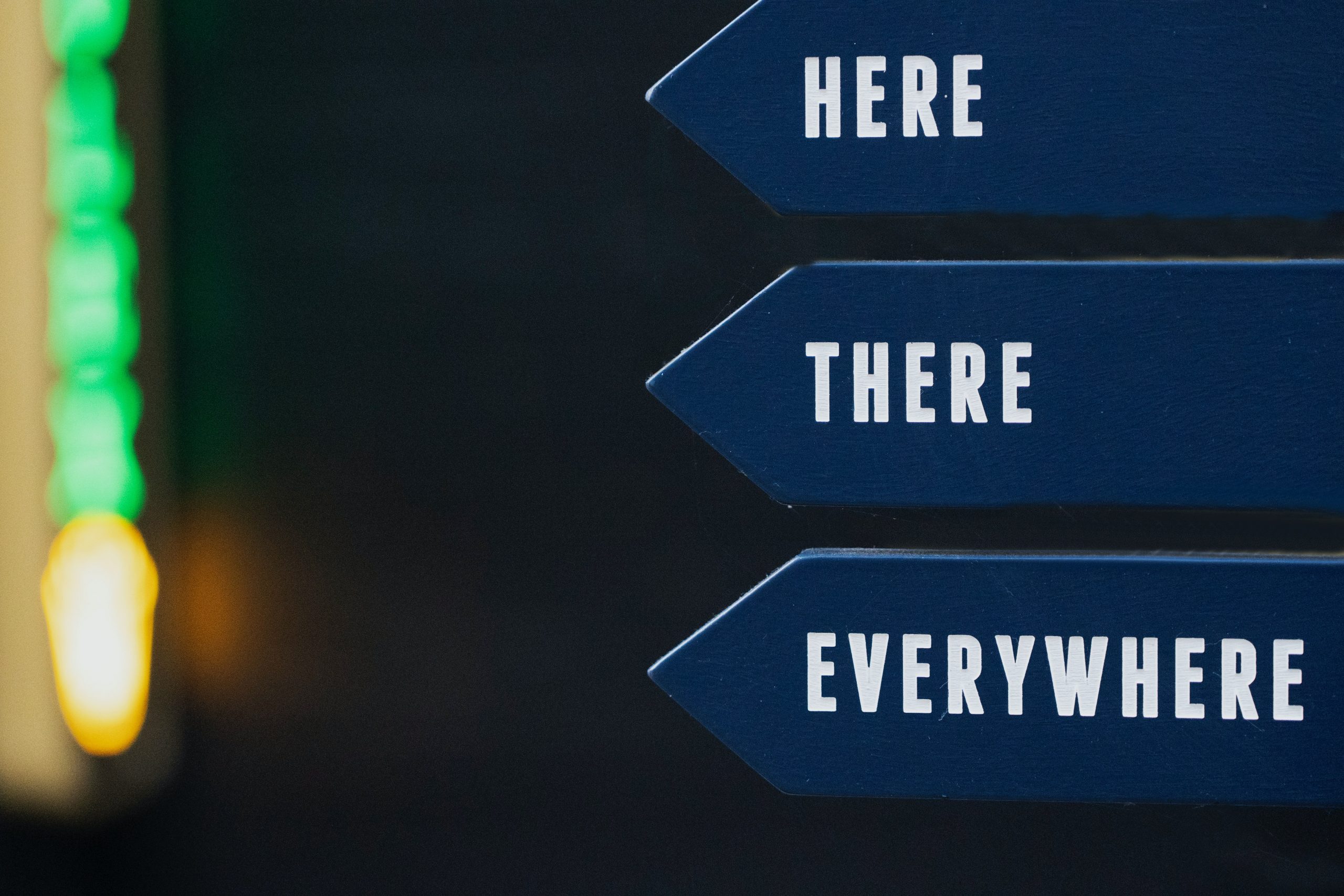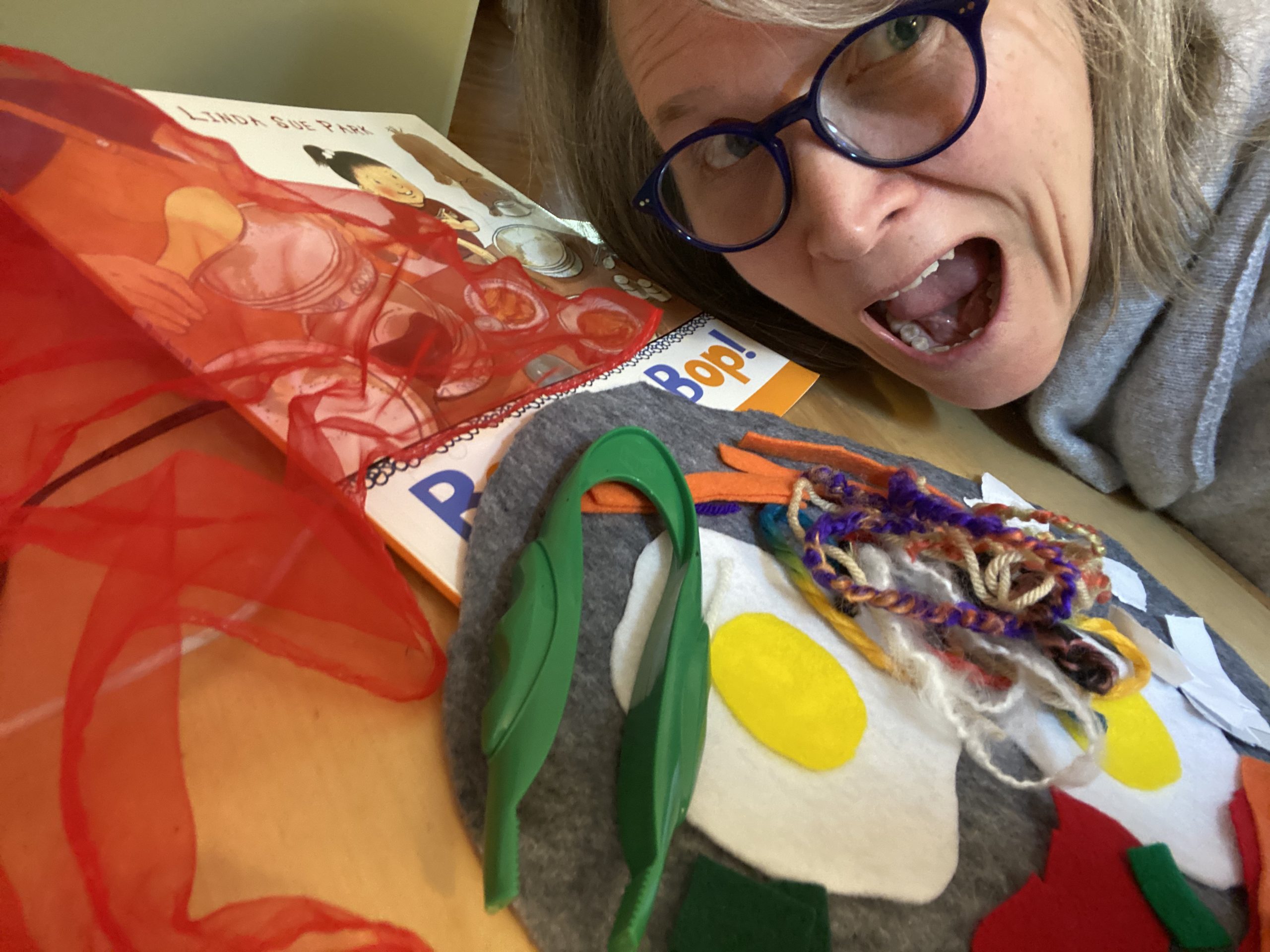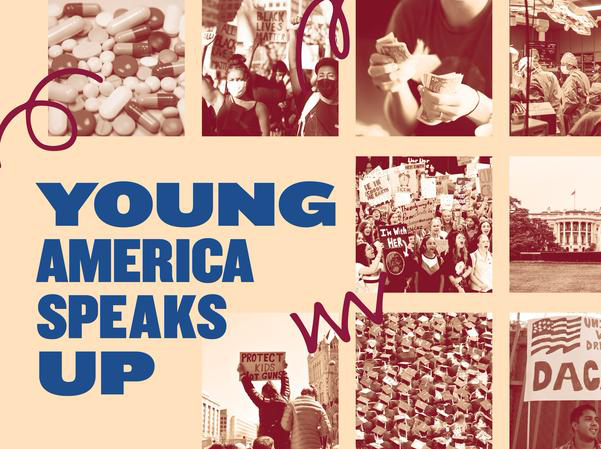This article was originally published on PBS SoCal’s At-Home Learning, an early childhood education resource (for ages 2-8) providing families, educators and community partners with at-home learning activities, guides, and expert advice.

Each Thursday morning at 10 a.m., kids and grown-ups across Alaska’s Southern Kenai Peninsula join me for an hour-long storytime—on the radio. Yes, radio. For some, that means an actual AM radio and for others that means a mobile device with the local public radio station’s free app installed. Did I ever imagine I would be hosting a radio show? No, but it has turned out to be another surprising solution to an unanticipated pandemic-related problem.
While I am new to radio, I am a storytime veteran. Storytimes at the public library where I work as the children’s librarian used to bring in a herd of families year-round. I took another version of storytime on the road to share with kids at local preschools, elementary schools and childcare centers. The COVID-19 pandemic changed all that.
Back in March, I found myself in the same boat as many of you. My community in Homer, Alaska, including the public library where I am the children’s librarian, closed in response to the pandemic. My coworkers and I immediately got to work figuring out how we could support community members remotely, and I knew storytime was the first gap I needed to address.
Why Storytime?
For families with children under the age of 6, a no-cost program like storytime offers a diverse group of families an opportunity to:
- grow their children’s early literacy skills in a play-based experience,
- access high-quality books and media of all kinds, and
- connect with other families and library staff; building positive relationships which, in many cases, last for years to come.
Because of the physical barriers Alaska’s geography offers and the social or emotional isolation many families feel at some point, building positive relationships has always been a critical part of family learning programs like preschool or toddler storytime. This became even more important in the midst of a pandemic. I knew all three goals—to grow little ones’ early literacy skills, provide widespread access to great media and help our community’s diverse families connect with each other and the library — were still important, but how could I do that while we hunkered down? It was time to get creative!
Why Radio?
Just weeks before the official closure, a producer at KBBI AM890 with whom I have collaborated many times, mentioned the possibility of taking storytime or another type of program to the airwaves if needed. Some librarians at the time were taking storytimes to Facebook, Instagram, or Zoom, but several aspects of radio made it the perfect fit for storytime in our community.
Storytime is for everyone. Despite being a youth services staff of one, my goal is the same as a department of many: to support as many little ones and their families as possible, including those who can’t get to the library or don’t yet see themselves as library users. Over the past 10 years, storytime has evolved with an eye toward more equitable access for families, the inclusion of more diverse authors and illustrators, and more community collaboration.
Homer—and Alaska in general—is home to many early adopters of new media, but also to those who can’t afford, can’t connect to (because of geography or lack of infrastructure), or don’t want to rely on the newest technologies. As a result, radio, an older technology, is still a vital part of communities big and small. In fact, in rural Homer, public radio successfully reaches more than half of the local community plus listeners living in more than 20 other remote communities, in part because of the “old school” AM technology it still uses.
Local programming is arguably also part of KBBI’s success. The station’s staff know how to create rich, locally produced content and are comfortable supporting volunteers or those new to radio like myself. Kathleen Gustafson, Radio Storytime’s producer, tackles the program’s technical needs and provides the music licenses, while I select the books and music, provide the literacy and learning expertise, and act as host.
What Radio Storytime Looks Like
During the hour-long, live program, which I host at the station, I mimic some of what happened during the in-library storytime with little modifications. I welcome families with a bend-and-stretch activity and then invite families to grab any props they may want for a movement break in the program, such as shaker-type props like a set of keys or a water bottle filled with ice or some sort of fabric to dance with. I then share three stories (with the permission of the books’ publishers) interspersed with multiple guided dance or movement breaks with recorded music between reading, and end with a call-in segment for kids. The program follows the same basic format every week and book titles are shared on both the library’s and radio station’s social media platforms before storytime. Families can predict what will happen or grab their own copies of the books if they have them.
Like in my in-person storytimes, I focus on many of the same early literacy skills (print motivation, vocabulary, phonological awareness, and narrative skills) and add short grown-up tips related to literacy and learning. Little ones hone their listening skills and rely on their imagination to paint the images as I read longer picture books with detailed narratives that rely on text to tell the story. To engage the audience, I ask open-ended questions about what might happen next in the story, what they think a character might look like, or if they have had any of the experiences from the story and pause momentarily to give families a chance to think about their answers. The call-in at the end of the program gives kids practice with rewarding back-and-forth conversation about the books or whatever is on their minds.
Of the original goals, supporting family engagement and fostering community connection seemed the trickiest to achieve but it has been the most surprising aspect of the program. I took style cues from children’s programming icons like Ella Jenkins and Fred Rogers and have tried to create a feeling of familiarity and closeness through pacing, program design, and speaking style that bridges the divide of social distancing and the airwaves. As a result, families with kids, and even grown-ups on their own, tune in together from home or while they are out and about.
What Does Success Look Like?
Radio Storytime is part of a broader library effort to support the literacy and learning of youth in my community this summer. The effort includes free Activity to Go! kits, virtual programs, curbside pick-up for books and other media, device check out, an outdoor StoryWalk, free passes to the local nature center, access to more digital books and audiobooks, remote library card set up, and suspended late fees for overdue library materials. Radio Storytime, however, continues to be the talk of the town. So how do I gauge its success when I can’t see parent’s reactions or hear the questions kids ask while I’m reading? How do I know the program is effective?
Since this summer’s library programming as a whole has been one grand experiment, I knew success wouldn’t be calculated in the same way as past summers. But all experiments need some criteria to guide next steps, so I think about information, both statistical and anecdotal, that will help me better the program and create additional experiences going forward that meet families’ literacy and learning needs. For example, I track the number of households that listen via the radio station’s online platform (radio listeners cannot be counted but are estimated based on the number of web listeners as per national ratings), how many kids call in, if different kids call in, what types of questions or comments they share, and the estimated age of the caller, among others. I also take note of the comments people email me or tell me when I’m out around town.
I imagined Radio Storytime would be a temporary move, but because of the pandemic, there is no end date for now.
What surprising new role are you playing for kids and their families? How are you engaging young children and families remotely?
And no matter where you are, join me for Radio Storytime on kbbi.org!
 Claudia Haines is a youth services librarian at the Homer Public Library. She supports the diverse literacy and learning needs of kids, teens, and families with dynamic programs and access to great media of all kinds. She advises and trains other librarians and educators on the topics of media literacy, STEM, and family learning and serves on both local and national committees that support families and literacy. She also writes for multiple sources about learning in a connected world.
Claudia Haines is a youth services librarian at the Homer Public Library. She supports the diverse literacy and learning needs of kids, teens, and families with dynamic programs and access to great media of all kinds. She advises and trains other librarians and educators on the topics of media literacy, STEM, and family learning and serves on both local and national committees that support families and literacy. She also writes for multiple sources about learning in a connected world.




